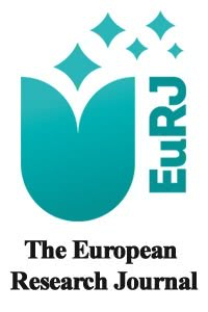Percutaneous nephrostomy experience in pediatric patients: comparison of fine and thick needle techniques
Percutaneous nephrostomy experience in pediatric patients: comparison of fine and thick needle techniques
___
- 1. Goodwin WE, Casey WC, Woolf W. Percutaneous trocar (needle) nephrostomy in hydronephrosis. J Am Med Assoc 1955;157:891-4.
- 2. Winfield AC, Kirchner SG, Brun ME, Mazer MJ, Braren HV, Kirchner FK Jr. Percutaneous nephrostomy in neonates, infants, and children. Radiology 1984;151:617-9.
- 3. Stanley P, Bear JW, Reid BS. Percutaneous nephrostomy in infants and children. Am J Roentgenol 1983;141:473-7.
- 4. Irving HC, Arthur RJ, Thomas DFM. Percutaneous nephrostomy in paediatrics. Clin Radiol 1987;38:245-8.
- 5. Koral K, Saker MC, Morello FP, Rigsby CK, Donaldson JS. Conventional versus modified technique for percutaneous nephrostomy in newborns and young infants. J Vasc Interv Radiol 2003;14:113-6.
- 6. Ramchandani P, Cardella JF, Grassi CJ, Roberts AC, Sacks D, Schwartzberg MS, et al. Quality improvement guidelines for percutaneous nephrostomy. J Vasc Interv Radiol 2001;12:1247-51.
- 7. Barnacle AM, Wilkinson AG, Roebuck DJ. Paediatric interventional uroradiology. Cardiovasc Interv Radiol 2011;34:227-40.
- 8. Nguyen HT, Herndon CA, Cooper C, Gatti J, Kirsch A, Kokorowski P, et al. The Society for Fetal Urology consensus statement on the evaluation and management of antenatal hydronephrosis. J Pediatr Urol 2010;6:212-31.
- 9. Dagli M, Ramchandani P. Percutaneous nephrostomy: technical aspects and indications. Semin Interv Radiol 2011;28:424-37.
- 10. Hogan MJ, Coley BD, Jayanthi VR, Shiels WE, Koff SA. Percutaneous nephrostomy in children and adolescents: outpatient management. Radiology 2001;218:207-10.
- 11. Yavascan O, Aksu N, Erdogan H, Aydin Y, Kara OD, Kangin M, et al. Percutaneous nephrostomy in children: diagnostic and therapeutic importance. Pediatr Nephrol 2005;20:768-72.
- 12. Sancaktutar AA, Bozkurt Y, Tüfek A, Söylemez H, Önder H, Atar M, et al. Radiation-free percutaneous nephrostomy performed on neonates, infants, and preschool-age children. J Pediatr Urol 2013;9:464-71.
- 13. Ball WS Jr, Towbin R, Strife JL, Spencer R. Interventional genitourinary radiology in children: a review of 61 procedures. Am J Roentgenol 1986;147:791-6.
- 14. Shellikeri S, Daulton R, Sertic M, Connolly B, Hogan M, Marshalleck F, et al. Pediatric percutaneous nephrostomy: a multicenter experience. J Vasc Interv Radiol 2018;29:328-34.
- ISSN: 2149-3189
- Yayın Aralığı: 6
- Başlangıç: 2015
- Yayıncı: Prusa Medikal Yayıncılık Limited Şirketi
Surgical approach to neglected giant cervical fibroids
Cagdas Nurettin EMEKLİOGLU, Emine AYDİN, Merve KONAL, Hicran ŞİRİNOĞLU, Erhan AKTÜRK, Ozgur AKBAYİR
Mahammad DAVUDOV, Hakan BULUŞ, Onur DİRİCAN, Pınar KAYGIN, Gülçin GÜLER ŞİMŞEK, Sezen YILMAZ SARIALTIN, Fatıma Nurdan GÜRBÜZ, Serpil OĞUZTÜZÜN
Mehmet Emin PARLAK, Osman KÜÇÜKKELEPÇE, Dilek ENER, Erdoğan ÖZ, Volkan BAYAR
Investigation of general surgery consultations in COVID-19 patients treated in a tertiary hospital
Mehmet Eşref ULUTAŞ, Kemal ARSLAN
Omer Fatih NAS, Muhammet OZTEPE, Selman CANDAN, Sedat Giray KANDEMİRLİ, Cem BİLGİN, Mehmet Fatih İNECİKLİ, Güven ÖZKAYA, Gokhan ONGEN, Cüneyt ERDOGAN
Meltem KARACAN GÖLEN, Dilek YILMAZ OKUYAN
Comparing the closure of hepatocaval ligament using stapler or suturing in liver surgery
Gizem ÖZER, Pınar KAYGIN, Onur DİRİCAN, Serpil OĞUZTÜZÜN, Sezen YILMAZ SARIALTIN, Gülçin GÜLER ŞİMŞEK, Ayşegül ERDEM, Murat KILIÇ, Tülay ÇOBAN
The mechanism of mindfulness meditation on pain by functional magnetic resonance imaging method
Yasemin YILDIZ, Sayad KOCAHAN, Alp Eren ÇELENLİOĞLU, Mehmet ÖZLER
